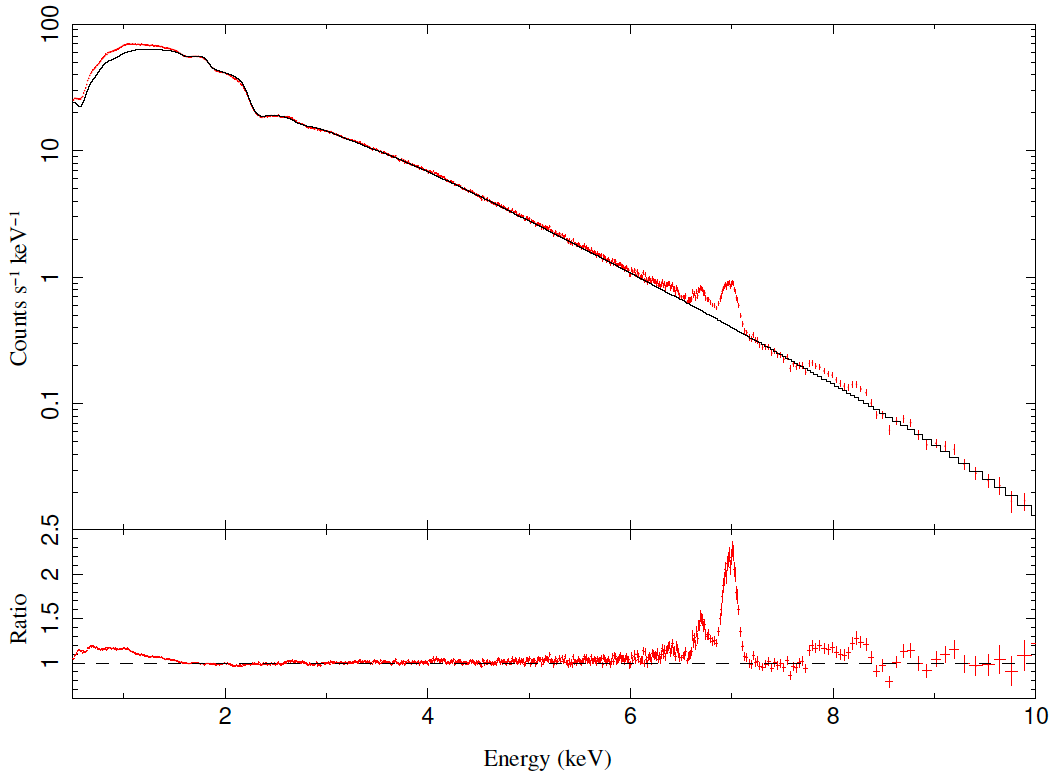NICER / ISS Science Nugget
for October 21, 2021
Ironing Out a Black Hole Binary
With millions of black holes and neutron stars throughout the galaxy that are only detectable when they are active, X-ray outbursts often mean a chance to discover a previously-unknown system. But occasionally, we discover outbursts from previously-detected systems. V4641 Sgr is one such source. Originally discovered during a bright, short outburst in 1999, V4641 is a black hole 6.4 times the mass of the sun in a 2.8 day orbit around a B star, roughly three times as massive as the sun. X-ray spectra of this outburst indicated a strong iron emission line, and since its discovery, 4641 has exhibited several small rebrightenings.
On October 12, MAXI detected a new outburst from V4641 Sgr, which was quickly confirmed by Swift, INTEGRAL, and NICER, which has been monitoring the source regularly ever since. Our data provide a sensitive new look at the iron line; these peaks in the energy spectrum can often be used to study effects of General Relativity, like the spin of the black hole. But the NICER spectrum shows a surprise: instead of the classic broadened iron line, we see two narrow lines at 6.7 and 7 keV (which indicates the presence of multi-million-degree iron). Comparing our NICER spectra to recent observations with the hard X-ray telescope NuSTAR may help determine the nature and location of this superheated iron gas (and what it tells us about the latest activity of V4641 Sgr).

Figure: Average NICER spectrum of V4641 Sgr (red) with a continuum model (black) fitted to energies away from strong emission lines. The continuum may be a hard Comptonised spectrum or thermal emission from a hot accretion disk around the black hole. Bottom: Ratio of the spectrum to the continuum model, highlighting the appearance of the lines. The narrow lines near 7 and 8 keV and the broad bump near 1 keV may be signatures of X-rays reflecting off hot gas.
<< Previous
Main Index